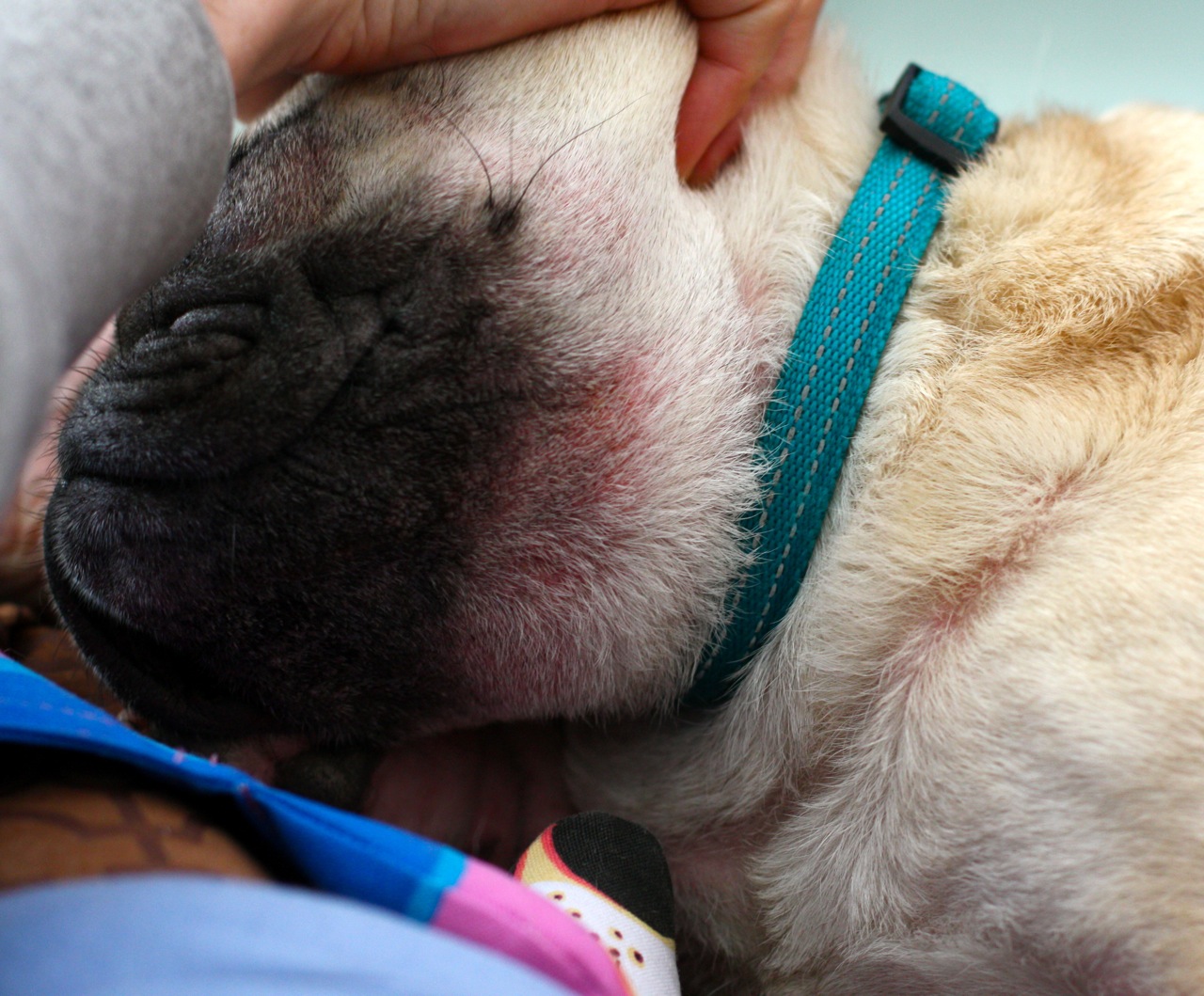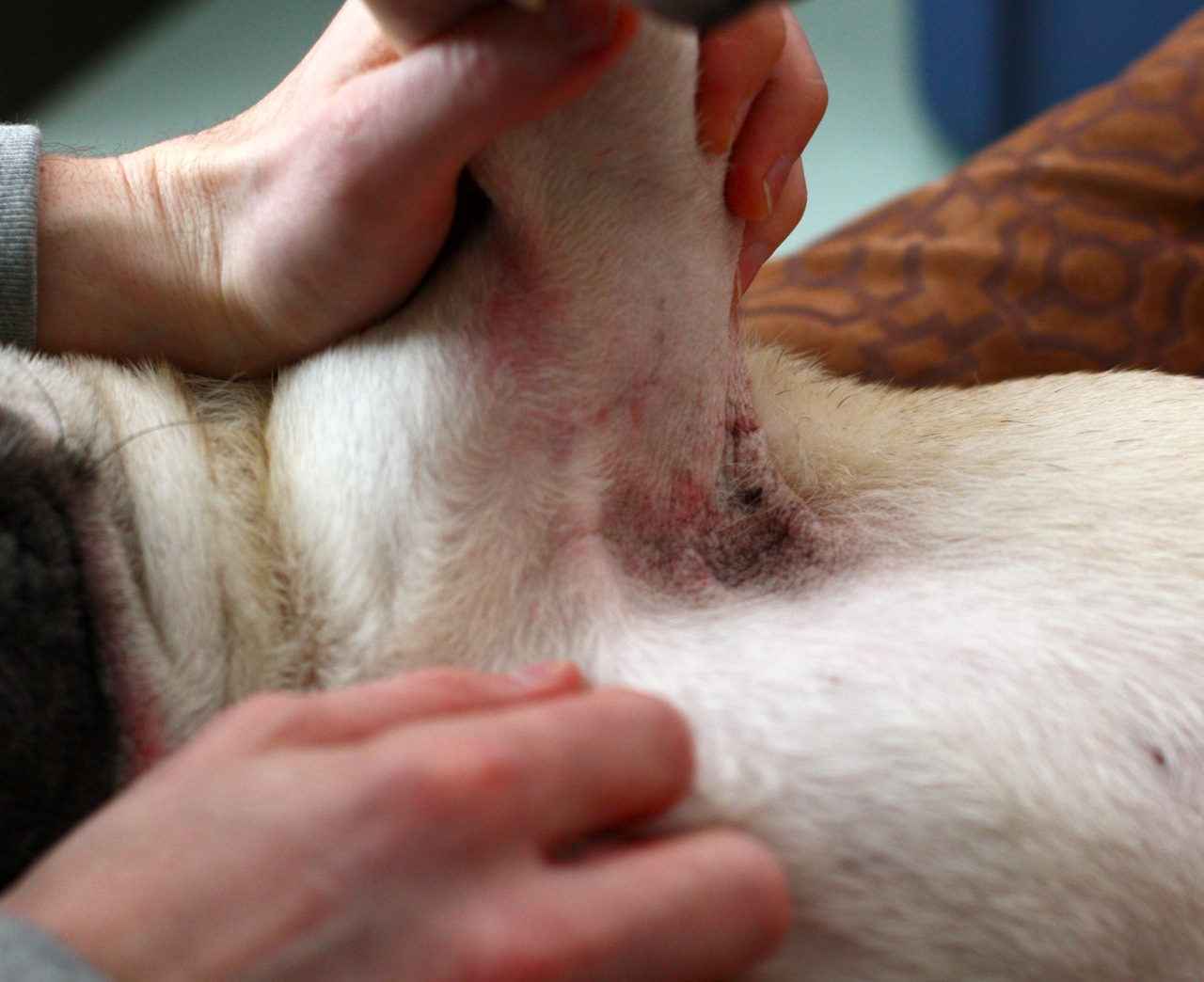All About Allergies (part one)
Sid’s immune system is a bit sensitive. No, actually, it’s very sensitive. Like, young-John-Travolta-in-a-plastic-bubble sensitive.
Because of his wacky immune system, he once came down with kennel cough after taking two sips from a communal water bowl while hiking at Griffith Park.
His wacky immune system is also to blame for his intense, year-round environmental and food-based allergies.
This dog is allergic to everything.
For real. He’s had two blood tests done in his short little life to determine what exactly it is that he’s allergic to, and the results of both tests indicated that, well, he’s allergic to:
- the Earth
- everything that grows on the Earth
- pretty much everything that lives on the Earth.
Trees, plants, weeds, grass, fleas, cats, dust, chicken, turkey, beef, wheat, oats, rice, corn – if it’s organic matter, he’s probably allergic to it.
Allergies in dogs don’t present themselves the way they do in humans. Rather than sneezy runny noses and watery eyes, allergy-addled dogs are in a constant state of itchiness, and all of the scratching, biting, and licking they do to calm their discomfort results in some pretty major secondary problems. Sid’s had two ear infections and three skin infections since August – all a result of bacteria and yeast nestling into the tiny breaks he makes in his skin while he’s scratching. His constant scratching causes raw, red patches of skin in his armpits, thighs, and under his neck, and the areas he scratches the most become thick and hyper-pigmented:
Worst of all, though, is knowing how uncomfortable he is throughout the day.
Treating allergies in a dog is a complicated on-going process that includes frequent bathing, trial-and-error elimination diets, anti-bacterial ointments, shea butter sprays, benadryl, and, if necessary, steroids or immuno-suppressant medication. You quickly become a regular at the vet.
Steroids are one of the go-to methods of calming allergy symptoms in dogs – they’re cheap, and a lot of dogs’ symptoms greatly improve while on them. But, unfortunately the long-term use of steroids for chronic conditions can lead to bigger problems down the road – diabetes and kidney failure, for example.
Sid was taking a low-dose steroid when we first adopted him, and after doing a bit of research on their long-term effects, we immediately set out to find an alternative treatment for his allergies. We worked with a fantastic holistic vet in Los Angeles who got us through our first winter with Sid by helping us set up a hypo-allergenic living environment, eliminating all wheat, grains, rice, corn, barley, and oats from Sid’s diet, and supplementing his meals of venison and sweet potato with fish oil and pro-biotics.
We also discovered, after buying him a Christmas sweater as a joke, that Sid doesn’t scratch himself quite as much when he’s wearing a shirt. We immediately bought a supply of cotton dog shirts from American Apparel. I never thought I’d be one of those people who dresses up her dog, but here he is:
His Aunt Jackie calls them his “confidence shirts.” Handsome bugger.
As springtime hit Los Angeles and trips to his regular vet for skin infections became more frequent, we realized that we were going to need more than cotton shirts and fish oil to manage his allergies. It was then that the vet brought up Atopica.
Atopica, also known as Cyclosporine, is an immuno-suppresant drug that blocks the immune system’s reaction to atopic, or inhaled, allergens. The same medication is used in humans after organ transplants to prevent the immune system from rejecting the new organ. Our then-vet explained that he only prescribed it as a last resort, once it was clear that no other methods of controlling the allergies were working, because it’s incredibly expensive. Fifteen pills cost $50, and the pills must be taken every day. Yes, you did your math right. That’s $100 a month, $1,200 a year.
As soon as Sid began taking Atopica, his scratching and licking ceased. His skin cleared up. The hair he’d lost on his undercarriage began growing back. It was amazing, and we could tell by his behavior that he was feeling much, much better. He was much less jumpy and anxious, and would actually relax and chill out like the other dogs we were caring for at the time.
But, after a month and a half of taking Atopica, he suddenly began vomiting. It would happen about three hours after he ingested his pill, everyday, like clockwork. We knew that nausea was a possible side effect of the medication – the carrying agent is castor oil, so many dogs have a hard time keeping it down – but after a month and a half of taking the pill without any problems, we thought we were in the clear. And once he started vomiting, that was it. We tried a bunch of different things – bland foods, giving him the pill with foods – but he just could not keep that pill down.
We were back to the drawing board, and since we knew at that point that we’d be moving to Brooklyn soon, his holistic vet prescribed a soy-based hydrocortisone to get him through the summer with the hope that once we got to the East Coast, his environmental allergies wouldn’t be as bad.
To be continued…














July 29th, 2011 at 5:20 pm
Sid, I didn’t know you were on that drug too. Sorry it gave you an upset stomach. I take pepcid with mine.
Love,
Payton
December 4th, 2011 at 3:38 pm
Where’s part 2? I’m a chihuahua with allergies too, and the only thing that seems to help is also wearing a shirt 🙁
January 11th, 2017 at 6:35 pm
I have a pug that’s allergic to everything too. Were you able to get Sid’s allergies under control?
Mine is constantly breaking out, constantly scratching, constantly on antibiotics and antifungals.
This is the first blog post I’ve ever seen where someone has a BubbleDog like we do.